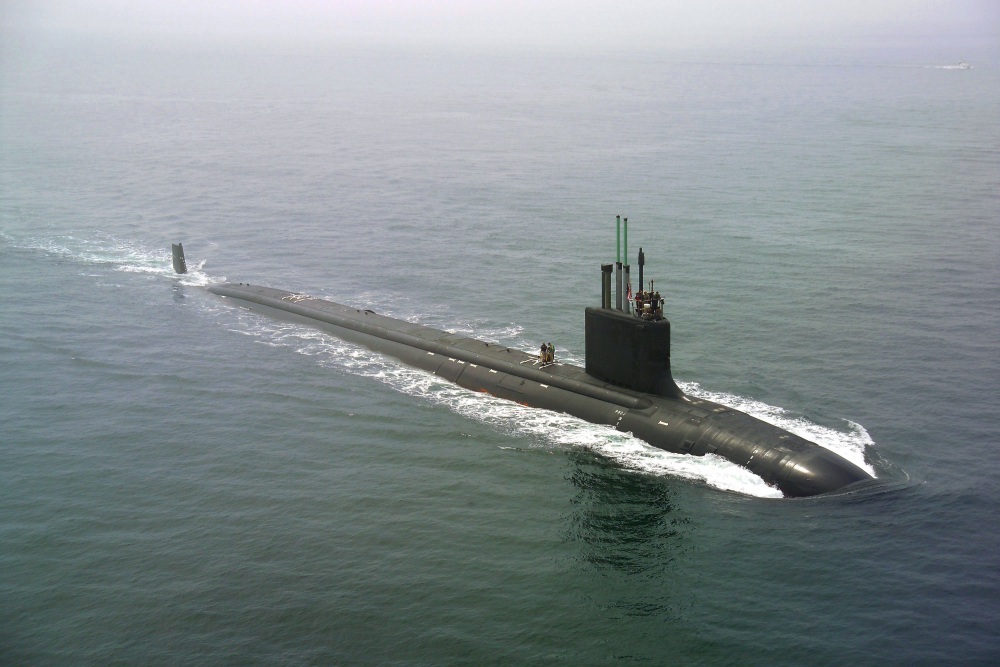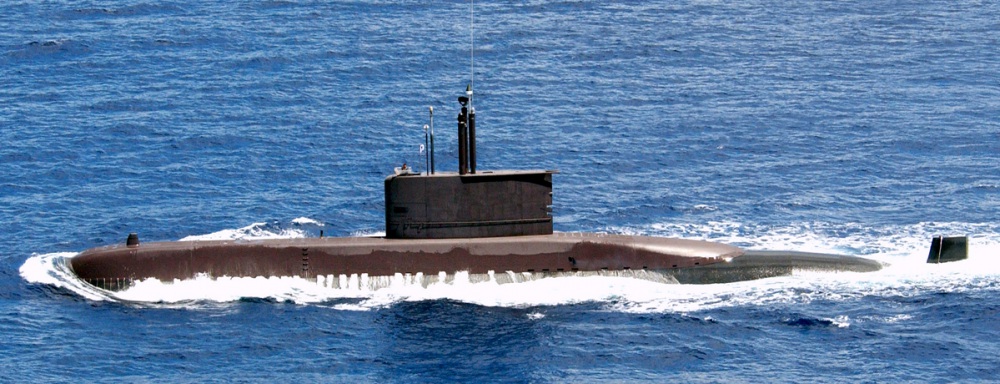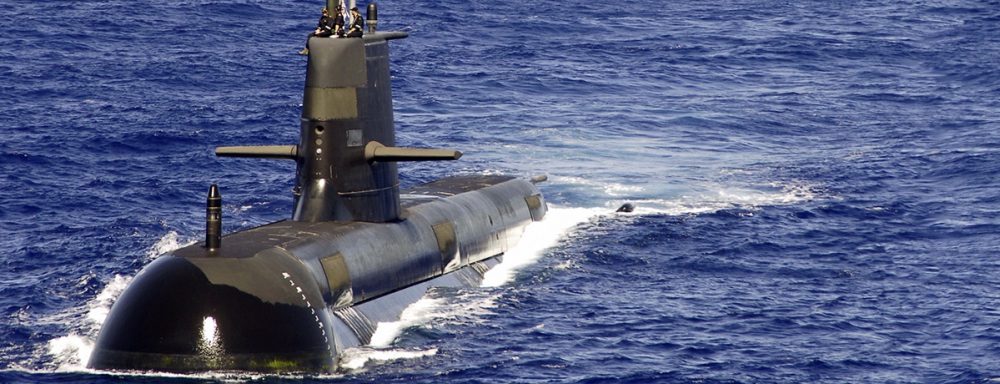The Brazilian Navy currently possesses a flotilla of seven submarines, including four Tupi-class (modified German Type 209) submarines, based at Almirante Castro e Silva, Mocangue Island, near Rio de Janeiro. The first of this class was constructed at Germany’s Howaldtswerke-Deutsche Werft (HDW), while the remaining three were built at Arsenal de Marinha do Rio de Janeiro (AMRJ). AMRJ launched a fifth boat, the improved Tupi-class Tikuna, on 9 March 2005. The Brazilian Navy has launched two out of the four planned Riachuelo-class diesel submarines, the Riachuelo in 2018 and the Humaitá in 2020. This new class of attack submarines are intended as a further step in the eventual creation of a fleet of nuclear-powered attack boats, which will use a hull modified from the diesel boats.1 Brazil is currently constructing the 48 MW land-based prototype reactor Labgene, which will form the model for the reactor of Brazil’s first nuclear submarine.2 In 2021 Brazil produced the first LEU metal fuel tablets for Labgene.3
Brazil’s Submarine Tables
- Brazil Active Duty Submarines
- Tikuna (Improved Tupi)
- Tupi (Type 209/1400)
- Riachuelo (Modified Scorpène-type)
In an attempt to modernize the country’s navy Brazil’s $10 billion Submarine Development Program (known as PROSUB) has the goal of commissioning four diesel-electric submarines and one nuclear-powered vessel by 2034.4 The Brazilian Navy signed detailed contracts in late 2009 with the French naval manufacturer DCNS. These contracts included technology transfers and construction assistance for four Scorpene-class diesel-electric attack submarines, as well as one nuclear powered vessel. With the exception of the first boat, all submarines will be built entirely in Brazil at the newly constructed Itaguaí Construções Navais (ICN) shipyard in Itaguaí.5 On December 14, 2018, Brazil launched the first of its Riachuelo-class Scorpène-type vessels, the Riachuelo (S40).6 The Humaitá (S41), the second of this class, launched on December 11, 2020.7 Despite plans to commission the Riachuelo in October 2020, neither submarine has yet entered operational service.8 ICN plans to launch the Tonelero (S42) and Angostura (S43) in 2022 and 2023 respectively.9 Brazil expects to launch its first SSN in 2029 and commission it by 2034.10 To support these planned acquisitions, in July 2020 the Brazilian Navy opened a new submarine base on the Ilha da Madeira near Rio de Janeiro, which has become the headquarters of its submarine command.11
The Brazilian Navy is responsible for the protection of some 7400 km of coastline, and Brazil’s submarines are a critical part of this effort. In addition to attacking the sea lines of communication (SLOCs) of the enemy, they can be employed for power projection through the disembarkation of special forces, for intelligence collection, and for laying mines.12 Brazilian policymakers and military officials believe that operating a nuclear submarine will aid their country’s long-term goal of securing a permanent seat on the UN Security Council.13 Furthermore, the recent discovery of significant oil reserves underneath the ocean floor in Brazil’s territorial waters (an estimated 33 billion barrels) gives further momentum to its pursuit of a nuclear-powered submarine as an asset for protecting the country’s natural resources.14
Explore the Collection
Australia Submarine Capabilities
Your are currently on
Brazil Submarine Capabilities
Chile Submarine Capabilities
China Submarine Capabilities
France Submarine Capabilities
Germany Submarine Capabilities
Greece Submarine Capabilities
India Submarine Capabilities
Indonesia Submarine Capabilities
Iran Submarine Capabilities
Israel Submarine Capabilities
Italy Submarine Capabilities
Japan Submarine Capabilities
Malaysia Submarine Capabilities
Netherlands Submarine Capabilities
North Korea Submarine Capabilities
Pakistan Submarine Capabilities
Russia Submarine Capabilities
Singapore Submarine Capabilities
South Korea Submarine Capabilities
Sweden Submarine Capabilities
Taiwan Submarine Capabilities
United States Submarine Capabilities
Submarine Detection and Monitoring: Open-Source Tools and Technologies
Stay Informed
Sign up for our newsletter to get the latest on nuclear and biological threats.
More on

Overview of the Submarine Proliferation Resource Collection
View global trends in sale and acquisition of diesel- and nuclear-powered submarines, information on capabilities, imports and exports.

Indonesia Submarine Capabilities
The Indonesian Navy, also known as Tentar Nasional Indonesia-Angkatan Laut (TNI-AL), operates two classes of submarines:

Australia Submarine Capabilities
A highlight of global trends in the sale and acquisition of diesel- and nuclear-powered submarines by country with capabilities, imports and exports. (CNS)
Glossary
- Diesel-electric submarine
- Diesel-electric submarine: A submarine with a diesel-electric transmission. Diesel-electric transmissions require access to oxygen for the diesel generator to charge the submarine’s batteries or drive the motor. This type of submarine is thus louder and must surface more frequently than a nuclear-powered submarine. A diesel-electric submarine can fire conventional cruise missiles against land targets, and in theory, can also carry nuclear-tipped cruise missiles. Diesel-electric submarines are significantly cheaper to build and purchase than nuclear-powered vessels, which makes them the vessel of choice for smaller navies.
- Low enriched uranium (LEU)
- Low enriched uranium (LEU): Refers to uranium with a concentration of the isotope U-235 that is higher than that found in natural uranium but lower than 20% LEU (usually 3 to 5%). LEU is used as fuel for many nuclear reactor designs.
- United Nations Security Council
- United Nations Security Council: Under the United Nations Charter, the Security Council has primary responsibility for maintaining international peace and security. The Council consists of fifteen members, five of which—China, France, Russia, the United Kingdom, and the United States—are permanent members. The other ten members are elected by the General Assembly for two-year terms. The five permanent members possess veto powers. For additional information, see the UNSC.
Sources
- “The Brazilian Navy - A Naval Force in Evolution,” Military Technology, Vol. 29, No. 4 (April 2005), pp. 75-77; in ProQuest Information and Learning Company, https://proquest.umi.com.
- “More Equipment for Brazil’s Nuclear Submarine,” Nuclear Engineering International, 8 July 2022, www.neimagazine.com.
- “Brazil Produces Fuel for Indigenous Nuclear Sub,” Shephard Media, 7 January 2022, www.shephardmedia.com.
- Togzhan Kassenova, Lucas Perez Florentino, and Matias Spektor, “Prospects for Nuclear Governance in Brazil,” Carnegie Endowment for International Peace, 10 March 2020, p. 16.
- Janet Tappin Coelho, “Brazil plans to expand submarine fleet,” Janes, 16 December 2014, www.janes.com.
- Nathan Gain, “Brazilian Navy’s Riachuelo Submarine Starts Sea Trials,” Naval News, 26 September 2019, www.navalnews.com.
- Xavier Vavasseur, “Second Scorpene Type Submarine Humaitá Launched in Brazil,” Naval News, 14 December 2020, www.navalnews.com.
- Victor Barreira, “First Brazilain-built, Riachuelo-class Submarine Takes Shape,” Janes, 9 September 2019, www.janes.com.
- Guilherme Wiltgen, “Prosub: Estágio Construtivo Atual dos Submarinos da Classe ‘Riachuelo’ [Prosub: Current Stage of Construction of ‘Riachuelo’-class Submarines],” Defesa Aérea & Naval, 25 October 2021, www.defesaaereanaval.com.br.
- Victor Barreira, “Brazil Sees Delays in Submarine Programme,” Janes, 16 June 2021, www.janes.com.
- Victor Barreira, “Brazilian Navy Activates Its New Submarine Base,” Janes, 20 July 2020, www.janes.com.
- Hartmut Manseck, “Submarine Class 209,” Naval Forces, Vol. 24, No. 4 (2003), p. 75; in ProQuest Information and Learning Company, https://proquest.umi.com.
- “Xando Pereira, “Precisamos de um Sivam Que Funcione no Mar [We Need a Sivam (Amazonia Vigilance System) That Works at the Sea],” A Tarde, 4 September 2008, www.atarde.com.br.
- “Brazil to use nuclear subs to protect undersea oil fields - defence minister,” BBC Monitoring Latin America, 4 June 2008; “Brazil,” Jane’s World Navies, IHS Inc., 2013, Retrieved 14 June 2013.
